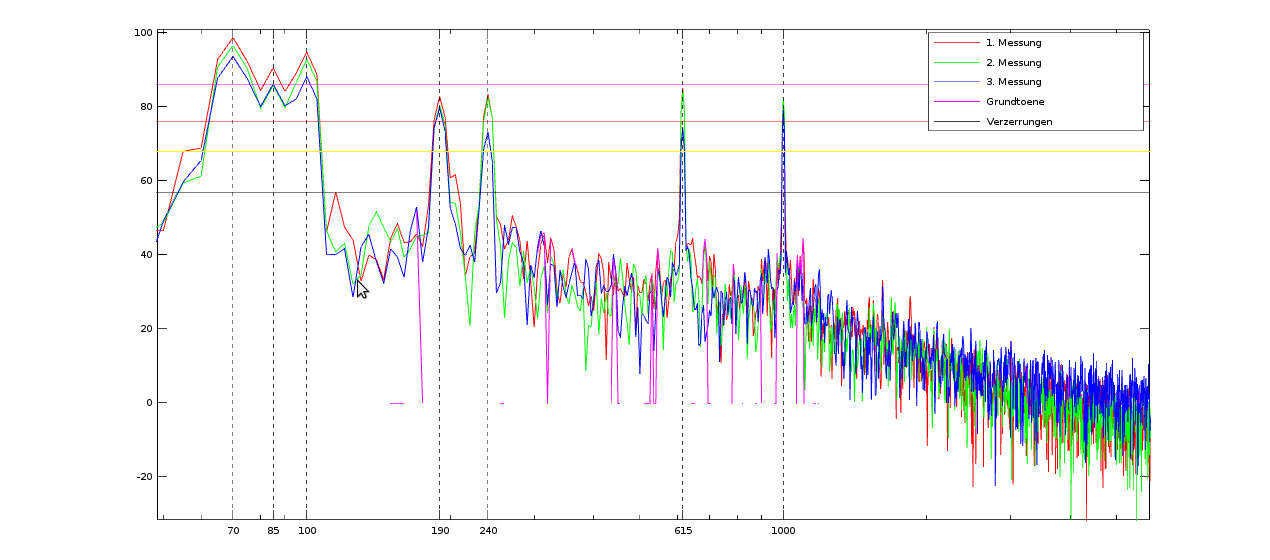
What is HiFi – technical explanations
What is HiFi? If you buy a TV, existing standards like „High Definition“ or „4k“ define the visual display resolution.
If you buy a music system, there is no corresponding HiFi (High Fidelity) sound reproduction standard in use today. „High definition audio“ may refer to certain digital audio data formats, but that does not say much about the aural quality of the reproduced sound.
In terms of technical parameters – what should a HiFi system do?
A HiFi music system replays recorded sound without unpleasant distortions and with full quality.
Ooookay, but what is full quality? When do distortions become unpleasant?
There is no standard answer to the question what a Hifi system should be capable of today. Therefore we reverse the question and define what it should not do:
TestHifi analyzes common weaknesses of music systems to rate them. Ratings are RED (far below HiFi), AMBER (closer, but still not HiFi) and GREEN (no weakness found, deemed to satisfy at least entry level HiFi quality – meeting the HiFi standard).
Unpleasant distortions are certain levels of harmonic distortion, intermodulation distortion, interference frequencies, distortion components outside the aurally weighted mask or wrong frequencies.
(Experts – please mind: we abbreviate ‚nonlinear distortion‘ to ‘distortion’ – producing sounds that are not contained in the original signal. Distortions can also extinguish parts of the original signal.)
A reproduction is incomplete if stereo effects are not reproduced, or if there are significantly low levels in certain frequency ranges, lack of frequencies due to intermodulation and so on.
TestHifi sends a complex, but short test signal through the sound system and analyzes the acoustical output in three microphone positions to achieve a final test result. While we devoted much effort to minimize parasitic influences, please mind that acoustical measurements capture the sound system including some degree of the room’s acoustic and ambient noise.
Criteria that describe what is HiFi, respectively what it is not.
In detail, a sound reproduction system could be HiFi if the following weaknesses are below certain limits:
- Frequency response amplitude drops, such as early high- or low frequency decline or dips in-between:
- Incomplete reproduction of recorded information, leading to missing sounds.
- You will not experience the full sound intention of the artist.
- Frequency response amplitude peaks: some frequencies are reproduced with higher level than others.
- Experience of distracting coloration, certain sounds appear too warm, thin or bright or over accentuated /rough.
- Loudness at harmonic distortion limit:
- Systems that cannot generate a minimum low frequency level within acceptable distortion limits obscure deeper sounds, adding artificial distortion noise, leading to a loss of clarity and transparency.
- Low / High frequency intermodulation distortion (LF / HF IMD):
- Accumulated level of all distortions compared to level of multiple low/high frequency test tones.
- Systems with high LF or HF IMD reproduce lower frequencies (such as base, drums, low voices) or higher frequencies (such as violins, guitars, flutes) very inarticulate, opaque, and without contour; in worst cases, the artificial noise exceeds the recorded sound.
- Aurally weighted intermodulation disconsonance:
- Frequencies with higher level of upper order harmonic distortion components compared to level of lower order harmonic distortion components are disconsonant with human hearing.
- Such systems tend to sound unnatural, compressed, fatiguing, rather sharp; they slow down transients, constraining vitality, reducing musical contrast.
- Stereo incompatibility:
- Systems with one channel only or summed left and right channel cannot reproduce stereo effects.